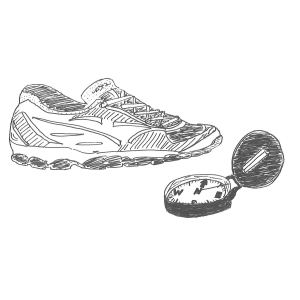Make Better, Braver Decisions with an Investor Mindset
This article was originally published on The Mogul Mom.
Investing, in the broadest sense, is the practice of choosing your present actions intentionally to produce the results you want at a later time.
Financial investors buy stocks and bonds now, in hopes they will be worth more at a later time. Entrepreneurs invest effort and capital now believing the businesses they create will deliver rewards in the future. Parents invest their energy and resources now, doing their best to ensure today’s children will become flourishing adults years down the line.
A future-driven, investor mindset guides hugely-rewarding decisions, but it is not a natural way of thinking and acting for us humans. The sensory experiences and emotional poignancy of the present moment are powerful. Our biology and neurology urge us to focus on surviving today over maximizing tomorrow.
A Ugandan friend of mine leads a charitable organization that helps farmers in his country produce more crops and get them to markets more efficiently. When the org was brand new I talked with him from time to time and heard updates on their progress. Distribution of superior corn seed and education on farming methods were successful, and the crop was looking good. The amount of corn produced was twice what the same farmers had grown on the same land the season before. We were so excited about how these farmers would benefit.
The time came to harvest the crops, and the harvest was a success. The employees of the organization rented a truck to transport the crops from the remote rural area to markets in the city.
When the truck arrived at the farms, they found no crops there to pick up! My friend was dismayed to learn that the farmers had already sold the crops from their big harvest. A local crop trader had offered them half price to buy the crops now. Rather than waiting a week or two for the truck to arrive, take the crops to market, sell them, and then pay them, the farmers accepted the cash-in-hand offer. They gave up all the benefit they would have gained from the higher yields that season. As you can imagine, my friend was extremely disappointed that the increase he sought to create was lost.
It’s easy to feel we would never do what those farmers did, that we are exempt from making such short-sighted tradeoffs. Not so fast.
Think about the pressures they were under. What if the crops never made it to market, or the money from selling them never made it back? What if the crops were stolen before the truck arrived? What if the nonprofit organization couldn’t be trusted? Their families might face starvation. Selling for half price, cash in hand right now, ensured their family’s survival for another season. Sending those crops to market for full price didn’t.
We are hard-wired this way. We all make decisions that are very much like their choice to sell their crop for half price.
An unfulfilled worker might choose another day at a job that promises to pay the bills, but returns “half price” or less on his or her true career potential.
A business owner might choose to spend an afternoon’s free time on routine tasks, avoiding the uncomfortable uncertainty of the big-picture strategy work that would more than double sales.
A married couple might choose another day of polite co-existing in a “half price” relationship, when confronting and resolving what’s broken between them might multiply the rewards of being together.
When the pressure is on, when fear looms in us, our instinct is to prioritize safety and survival even when it means our long-term future will take a hit.
So how can we be unnaturally wise, cultivate a long-term investor mindset, and make better, braver decisions? It can be done. Great investors develop a strong sense of the future. They feel it vividly, and this informs the decisions they make today.
A few suggestions:
Schedule periodic times (no less than quarterly) to direct your attention to the future. Bring that “later time” into focus by exploring and reviewing your vision, your big goals, and the rewards that make it all worth it for you.
Write your long-term goals in succinct statements. Map out plausible paths to achieving those goals. Refer back to these for clarity when things get hectic.
Bring your best mentors and your best friends into this with you. Talk with them about what you want most. Getting the future out of your head and into an audible conversation will make it feel more real and attainable.
Run the numbers. Make a spreadsheet showing the likely long-term returns from that expensive hire, that project to increase recurring revenue, or that additional allocation to your retirement account. Math is remarkably unphased by our short-term biases, and can lend clarity and confidence at decision time.
Put the next steps toward your long-term priorities into action now. The pressures of life and work will always be there. Waiting until you feel caught up and comfortable isn’t realistic. Let some other things slide to make room for your long-term priorities. That’s a good trade.
Some questions to ask yourself, and explore with those who support you:
What do I want most in the future?
What scares, distracts, or pressures me away from pursuing that?
Where am I choosing “half price” today at the expense of the future I want?
What could I do today that might not be obvious, urgent, or easy, but would make a big impact over time?


